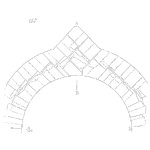
I estimated actuarial failure rates, made actuarial forecasts, and recommended stock levels for automotive aftermarket stores. I wondered how to account for seasonality in their sales? Time series forecasts account for seasonality but not for age, the force of mortality accounted for by actuarial forecasts. I finally figured out how to seasonally adjust actuarial forecasts. It’s the same method, David Cox’ “Proportional Hazards” model, used to make “Semi-Parametric” estimates and “Credible Reliability Predictions”.
[Read more…]












